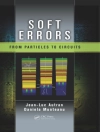This book describes recent technological developments in next generation nuclear reactors that have created renewed interest in nuclear process heat for industrial applications. The author’s discussion mirrors the industry’s emerging focus on combined cycle Next Generation Nuclear Plants’ (NGNP) seemingly natural fit in producing electricity and process heat for hydrogen production. To utilize this process heat, engineers must uncover a thermal device that can transfer the thermal energy from the NGNP to the hydrogen plant in the most performance efficient and cost effective way possible. This book is written around that vital quest, and the author describes the usefulness of the Intermediate Heat Exchanger (IHX) as a possible solution. The option to transfer heat and thermal energy via a single-phase forced convection loop where fluid is mechanically pumped between the heat exchangers at the nuclear and hydrogen plants is presented, and challenges associated with this tacticare discussed. As a second option, heat pipes and thermosyphons, with their ability to transport very large quantities of heat over relatively long distance with small temperature losses, are also examined.
Innehållsförteckning
Energy Resources And The Role Of Nuclear Energy.- Combustion.- Hydrogen Production Plants.- New Approach To Energy Conversion Technology.- Evaluation Of Ngnp IHX Operating Condition.- Heat Exchangers.- Effective Design Of Compact Heat Exchangers For NGNP.- Appendices.
Om författaren
Dr. Bahman Zohuri is founder of Galaxy Advanced Engineering, Inc., a consulting company that he formed upon leaving the semiconductor and defense industries after many years as a Senior Process Engineer for corporations including Westinghouse and Intel, and then as Senior Chief Scientist at Lockheed Missile and Aerospace Corporation. During his time with Westinghouse Electric Corporation, he performed thermal hydraulic analysis and natural circulation for Inherent Shutdown Heat Removal System (ISHRS) in the core of a Liquid Metal Fast Breeder Reactor (LMFBR). While at Lockheed, he was responsible for the study of vulnerability, survivability and component radiation and laser hardening for Defense Support Program (DSP), Boost Surveillance and Tracking Satellites (BSTS) and Space Surveillance and Tracking Satellites (SSTS). He also performed analysis of characteristics of laser beam and nuclear radiation interaction with materials, Transient Radiation Effects in Electronics (TREE), Electromagnetic Pulse (EMP), System Generated Electromagnetic Pulse (SGEMP), Single-Event Upset (SEU), Blast and, Thermo-mechanical, hardness assurance, maintenance, and device technology. His consultancy clients have included Sandia National Laboratories, and he holds patents in areas such as the design of diffusion furnaces, and Laser Activated Radioactive Decay. He is the author of several books on heat transfer and directed energy weapons technologies.












